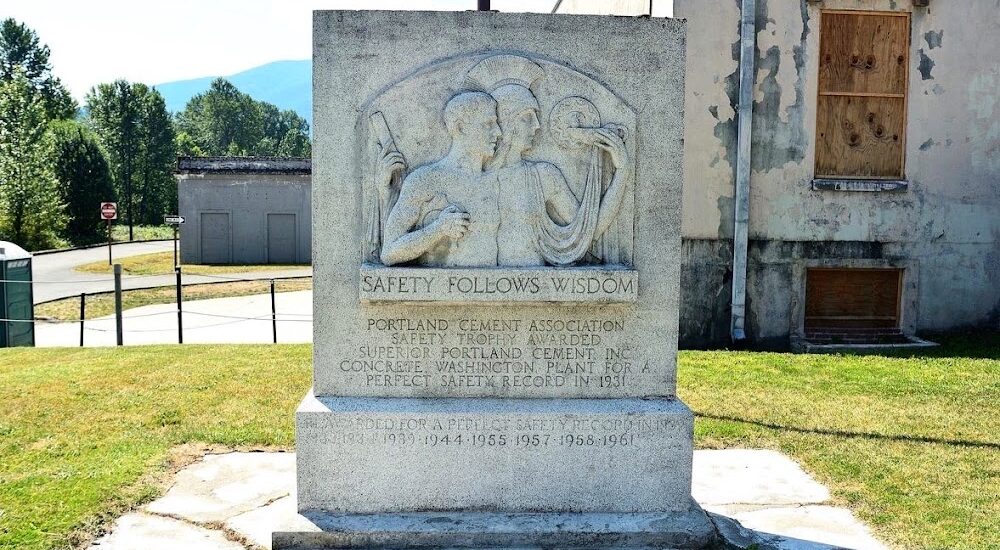Welcome to the Historic Superior Portland Cement Building in Concrete, Washington. This site is not only a relic of industrial history but also a testament to the resilience and innovation of early 20th-century communities in the Pacific Northwest.
The story of Concrete begins in 1871 when settlers arrived at the banks of the Baker River, initially naming their settlement Minnehaha. By 1890, the area was formally platted by Magnus Miller and renamed Baker. However, the true transformation came with the establishment of the Washington Portland Cement Company in 1905 on the east bank of the river, creating a settlement known as Cement City.
In 1908, the Superior Portland Cement Company set up another plant in the area, marking a significant economic boom. The two towns, Baker and Cement City, merged in 1909, choosing the name Concrete in honor of the industry that fueled their growth. By 1918, Superior Cement acquired Washington Portland Cement, and together, they produced an impressive 5,200 barrels of cement per day at their peak.
The town’s development was closely tied to the cement industry, with key projects like the Hiram M. Chittenden Locks near Seattle driving demand. Notable figures such as engineers and plant managers played crucial roles in these operations, though their names seldom make it into the history books.
Concrete’s architectural landscape was shaped by a series of devastating fires before 1921, which led the community to rebuild using the fireproof material they produced in abundance—concrete. This decision has left a legacy of distinctive concrete buildings that survive to this day.
Though the cement plants closed by 1967 due to technological advancements making them obsolete, the town’s history is still palpable. Visitors are greeted by the iconic silos and remnants of the old cement plant, serving as silent witnesses to Concrete’s industrious past.






